To limit the spread of COVID-19, in March 2020 the Australian Government issued a “Do not travel” warning for all international destinations, including New Zealand. Both countries also imposed restrictions on incoming travellers, with New Zealand requiring all new arrivals – including Australians – to be quarantined for two weeks.
This changed recently, however, with a decision by the New Zealand Government to open a trans-Tasman bubble meaning that from April 19, 2021, Australians can once again visit New Zealand on holiday without needing to quarantine on arrival. The Australian Government has now updated its advice for New Zealand from “do not travel” to advise people “exercise a high degree of caution” due to the risk of future COVID-19 outbreaks and lockdowns in New Zealand.
More broadly, the declaration of COVID-19 as a worldwide pandemic and the subsequent closing of borders across the world has had a dramatic impact on travel insurance policies, which continues to be felt despite the trans-Tasman Bubble. For example, Canstar analysis of policies on its database over the past year has revealed:
- Travelling overseas against the advice of the Australian Government voids most travel insurance policies.
- Many insurers have pandemic exclusions in their terms and conditions, which means even if travellers could leave the country, they may not be covered if they fell ill – or died – from COVID-19.
- Some companies have stopped selling new international travel insurance policies altogether for the time being.
That said, at the time of writing 12 insurers on our database have indicated they will offer COVID-19-related cover to Australian holidaymakers who visit New Zealand now that travel restrictions have eased.
When can I travel to New Zealand?
If you are keen to explore the “Land of the Long White Cloud”, you may now be able to sate your wanderlust, with the long-awaited “trans-Tasman bubble” now allowing eligible travellers to move between Australia and New Zealand more easily, without needing to quarantine. This comes after eligible visitors from New Zealand were first granted the ability to visit certain “Safe Travel Zones” in Australia from October 2020, without needing to enter quarantine on the way in.
Australian domestic travel restrictions have also progressively lifted as virus cases have remained low in number over the past several months, although this is an evolving situation as occasional COVID-19 clusters have at times forced borders to temporarily shut again.
For now, Australian visitors can once again enter New Zealand on holiday, provided they haven’t been to any other countries within the last 14 days and aren’t experiencing any cold, flu or COVID-19 symptoms. In announcing the bubble, New Zealand Prime Minister Jacinda Ardern said it would be a case of “flyer beware”, noting holidaymakers would “need to plan for the possibility of travel being disrupted if there is an outbreak”. This could mean There may be additional requirements if you’re travelling from a part of Australia that has had recent community transmission of the virus, Ms Ardern said.
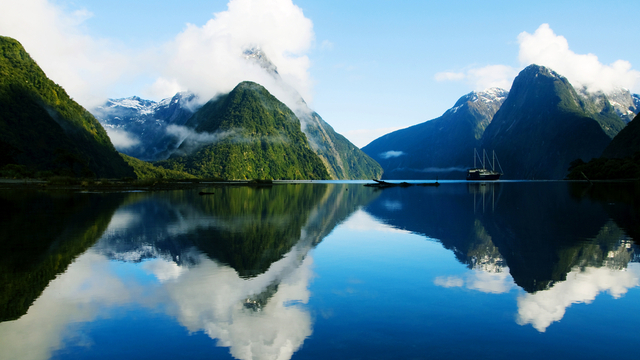
The motivation behind the move is to throw a lifeline to both countries’ stalled tourism industries, according to the Australia New Zealand Leadership Forum’s (ANZFL) Trans-Tasman Safe Border Group, a trans-Tasman team of 40 experts which initially put forward the idea of a travel bubble last year.
“Prior to the outbreak of COVID-19, New Zealand was the most popular outbound travel destination for Australians with 1.5 million visitors arriving from across the Tasman in 2019, accounting for 40% of all foreign visitors to New Zealand,” a statement from the group said.
“Likewise, Australia was the most popular outbound travel destination for Kiwis. New Zealand is Australia’s second-largest source market for visitors (behind China), with 1.4 million visitors in 2019, accounting for 15% of total visitors to Australia.”
For the time being, hopeful tourists logging on to a flight-finding website hoping to book a trip to New Zealand may find there are some flights now available for trips across the ditch, with Qantas and Air New Zealand having ramped up their flight numbers since the bubble opened. There may not be as much airline competition in the short-term as in the pre-pandemic era, however, with Qantas’ main Australian rival, Virgin Australia, having said the “evolving border requirements” of the bubble meant it would remain a domestic-only airline for the next few months.
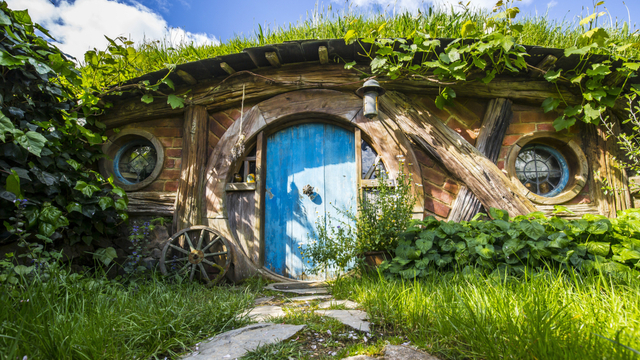
Travel insurance to New Zealand: Can I buy it now and what will it cover?
Before the travel bubble was announced, Canstar finance expert Steve Mickenbecker said he expected travel insurance sales should resume once international travel restrictions are lifted.
“Some companies are already selling travel insurance, for people who are buying their trips in advance,” Mr Mickenbecker said at the time.
And indeed, Canstar’s research analysts recently found that while many policies still don’t cover international travel, several do, with 10 insurers on our database now offering COVID-19-related cover on trips to New Zealand.
“Our view has always been that you should not leave Australia without travel insurance,” Mr Mickenbecker said.
“There are all sorts of costs if something goes wrong overseas – lost baggage and cash, forfeited pre-paid accommodation and flights, to name a few.”
What should I consider when buying travel insurance?
Mr Mickenbecker stressed that anyone planning on travel and buying insurance should look closely at the cancellation coverage in that policy.
“One big thing that has come out of this pandemic is that people are much more aware of the risks when it comes to travelling, and more aware that not all insurance policies are equal,” he said.
“It has shown that people should not only look at the premium costs when they buy insurance, but also what the policy includes and excludes. Anyone buying insurance should read the Product Disclosure Statement (PDS) very carefully, to see if there are pandemic or epidemic exclusions, as well as what cancellation costs are covered and under what circumstances.
“If the COVID-19 crisis has taught us anything about travel insurance, it’s that the earlier you buy your insurance, the better, assuming the travel you want to do is allowed under official government advice and covered by the policy you choose. Once you part with money for flights and accommodation, that’s the time to buy insurance or you could be at risk of not being able to buy cover for certain things later on.”
Will travel insurance cover COVID-19-related medical expenses or cancellations?
Mr Mickenbecker said any travel insurance to New Zealand purchased now is not likely to cover COVID-19 or pandemic-related claims, unless the insurer specifically mentions on its website or elsewhere in its policy documentation that it will cover these types of claims.
“Most policies have a ‘known events’ clause, which means that if the event is already a known risk when the policy is taken out, you will not be covered,” he said.
As it stands, most policies are unlikely to cover COVID-19-related medical costs, although Australia and New Zealand have a Reciprocal Health Care Agreement (RHCA) with each other. That means, under normal circumstances, Aussie travellers to NZ are covered for the cost of some “necessary medical care that can’t wait until you get home”, including hospital care and medicines. Travellers generally still have to pay for GP visits and ambulance transport, and part of the cost of medicines if they are prescribed by a GP.
As mentioned earlier, there are also now some policies on Canstar’s database that may offer cover should you contract COVID-19 on a trip to New Zealand, but it could be worth confirming the details of this cover with your chosen insurer before you travel.
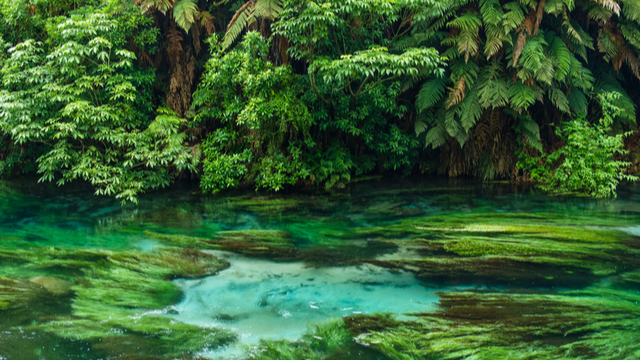
What will New Zealand travel insurance cover?
Analysis by Canstar Research has found that while some insurers on the database have added in pandemic exclusions and others have temporarily stopped selling cover for international travel altogether, the sorts of things travel insurance can cover have otherwise remained fairly comparable to before the crisis began.
While you may not be able to obtain cover for COVID-19-related claims unless you seek out a policy that offers it, some other reasons why you might need travel insurance on trips to New Zealand now that borders have re-opened could include:
Cancellation of flights, accommodation and tours
As many people have learned after the coronavirus crisis caused millions of trips to be abandoned, making sure you have cancellation insurance in your policy could be a wise idea. Travel insurance could help you recoup some of the costs of having to cancel your trip, if all of the following circumstances apply:
- Your policy specifically contains cancellation cover
- The cancellation was for an “unforeseeable reason”, such as an accident that injures you, a sudden illness or a death in the family
- The cancellation meets the timeframe specified in your cancellation clause
- The cancellation conditions meet all other requirements of the policy.
Checking the Product Disclosure Statement provided with your policy carefully before purchase could be a good idea, to ensure you know exactly what you would be covered for in the event of cancellation. It could also be a wise idea to ask your insurer what would happen if you had to cancel because of a reason related to COVID-19. If the policy contains a “pandemic exclusion”, that could also apply to cancellations and could impact the success of any claims.
Before the COVID-19 crisis, there was an add-on product called “Cancel for any reason” (CFAR) sold through insurer Cover-More as an opt-in added extra to its travel policies. The company suspended sales of that product on 13 March, 2020.
Cover for theft or lost luggage and personal items
Travel insurance policies can typically include cover for theft or loss of luggage and personal items, usually up to a certain coverage amount.
The Australian Government’s Smartraveller website advises travellers to New Zealand to take as much care of your belongings as you would if you were back home. It could be a good idea to check if you need to list specific items – such as expensive camera equipment or jewellery – on your policy.
Overseas emergency medical expenses (not related to COVID-19)
The reciprocal health care agreement will allow any Australian traveller to New Zealand to receive publicly-funded emergency medical treatment, if a doctor decides that you immediately require necessary medical treatment.
This may include diagnosis and treatment, pharmaceutical benefits (medications), hospital services and maternity services – but it doesn’t cover seeing a GP, private specialists, a trip in an ambulance or an emergency flight home.
This is where travel insurance can come in handy, as its coverage for medical emergencies and medical evacuation and repatriation (going home) could help you to cover those costs.
Driving in New Zealand
Driving yourself around the North and South islands is a popular way of seeing the country. You can drive a car in New Zealand using your Australian driver’s licence – and, thankfully, they drive on the left-hand side of the road, just like us.
There are a couple of aspects you might like to consider before you hop behind the wheel, however:
- New Zealand’s roads can often become dangerous with the addition of ice, snow, fog and high winds. Ask your hire car company for snow tyres in case of ice and snow, particularly if you’re travelling in winter, and ask them whether the car you’ve been allocated has headlights strong enough to cut through fog.
- Riding a motorcycle or scooter in New Zealand may not be covered by your travel insurance as standard – read the PDS carefully or check with your insurer to confirm this.
- Drinking to excess and driving will void your travel insurance policy. And it will get you in trouble with the Kiwi police, just like it would get you in trouble with the authorities back home.
It could be a good idea to talk to your insurer about any plans to hire a car or drive while on your New Zealand trip. It may also be possible to take out a separate car insurance policy while overseas, or to negotiate one through the vehicle hire company. As with any insurance product, it’s a good idea to read the PDS thoroughly, to ensure you have the cover you need.
Extreme sports
Extreme sports including bungee jumping, white water rafting, cave diving, skydiving, jet boating, horse riding and snowboarding are abundant throughout New Zealand.
But be warned – many of these activities are typically not covered under a standard policy. It could be a wise idea to ask your insurer about optional extra coverage to your travel insurance if you’re considering any out-of-the-ordinary activities.
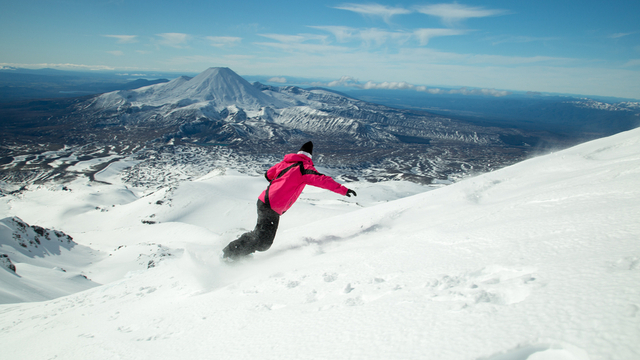
What does New Zealand travel insurance not cover?
There are a number of common exclusions on travel insurance policies, such as claims related to:
- Driving a motorbike without a helmet
- Illegal behaviour
- Losing unattended items
- Behaviour under the influence of drugs or alcohol
- Pre-existing conditions you were aware of before leaving and didn’t inform your insurer about
When buying travel insurance, it can be a wise idea to compare travel insurance and check the fine print carefully to make sure you’re covered for the things that matter to you. That could involve reading the Product Disclosure Statement carefully and talking to your insurer about what activities you intend to do while on your holiday.
Risks in New Zealand
There is currently a “Do not travel” ban for all overseas travel from Australia. As of 18 January, 2021, the travel warning on the Australian Government’s Smartraveller.com.au website states:
“A Managed Isolation Allocation System has been introduced and you’ll need to register to secure a place in managed isolation before departing for New Zealand. You’ll be required to isolate for 14 days and you may be required to contribute to the cost of your managed isolation on arrival. See New Zealand Government Managed Isolation and Quarantine website for the details.”
However, if the restrictions were to be lifted to allow for a “Safe Travel Zone” and trans-Tasman travel, that advice would likely change.
In addition to the current COVID-19 travel restrictions, Smartraveller provides a list of risks of which travellers to New Zealand should be aware, including:
Safety
- Crime rates are similar to those in Australia. Thieves often target vehicles. Don’t leave valuables in your car or campervan.
- Earthquakes are a constant risk. Large, damaging quakes can happen at any time. Know what to do during and after an earthquake.
- All of New Zealand’s coastline is at risk of a tsunami. Know the tsunami warning signs and move to high ground immediately. Don’t wait for official alerts.
- New Zealand has several active volcanoes. A volcano erupted on White Island in the Bay of Plenty on 9 December 2019. Further eruptions are possible. Avoid the area and follow the advice of local authorities.
- Weather conditions can change quickly. Severe weather could leave you stranded or injured, especially in an isolated area. If you’re climbing, hiking or in a remote area, register your trip with the Department of Conservation. Carry a personal locator beacon.
Health
- There was an outbreak of measles in New Zealand in 2019. Make sure your vaccinations are up to date before you travel.
Local laws
- Don’t use or carry illegal drugs. Penalties may include fines and prison sentences, including for small amounts.
- Carry approved identification if you want to purchase alcohol or enter licensed premises. Approved ID includes your current passport, a current New Zealand driver’s licence, or a Kiwi Access Card. You can’t use an Australian driver’s licence.
Travel
- You can drive for up to 12 months with your Australian driver’s licence. If you’re staying longer, you would need to get a local licence. Drive to the conditions. Ice, snow, fog and high winds can be dangerous. Heavy rain can cause landslides across roads. There aren’t many motorways outside major cities. Prepare for longer travel times than in Australia.
- At the time of writing, you’re legally required to wear face coverings on all public transport and domestic flights throughout New Zealand due to COVID-19. Children under the age of 12 will be exempted, as will people with certain medical conditions.
For the full, current advice, go to the smartraveller.gov.au website.
Do Australians need to get a visa for New Zealand?
In announcing the trans-Tasman Bubble, Ms Ardern said a visitor visa was not required to visit New Zealand if you are an Australian citizen or Australian permanent resident and only staying in New Zealand for three months or less.
If you are planning to visit New Zealand for more than three months but less than nine months, then you’ll need a Visitor’s Visa, according to the New Zealand Department of Immigration.
However, there have been no details released as yet about any visa arrangements that may be needed if the “trans-Tasman bubble” were to be established.
Main image: Hiking at Mt Cook, New Zealand. Source: Daniel Huebner/Shutterstock.com
This content was reviewed by Sub Editor Jacqueline Belesky as part of our fact-checking process.


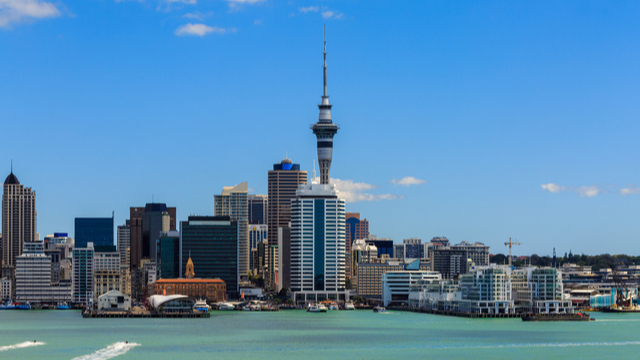





Share this article